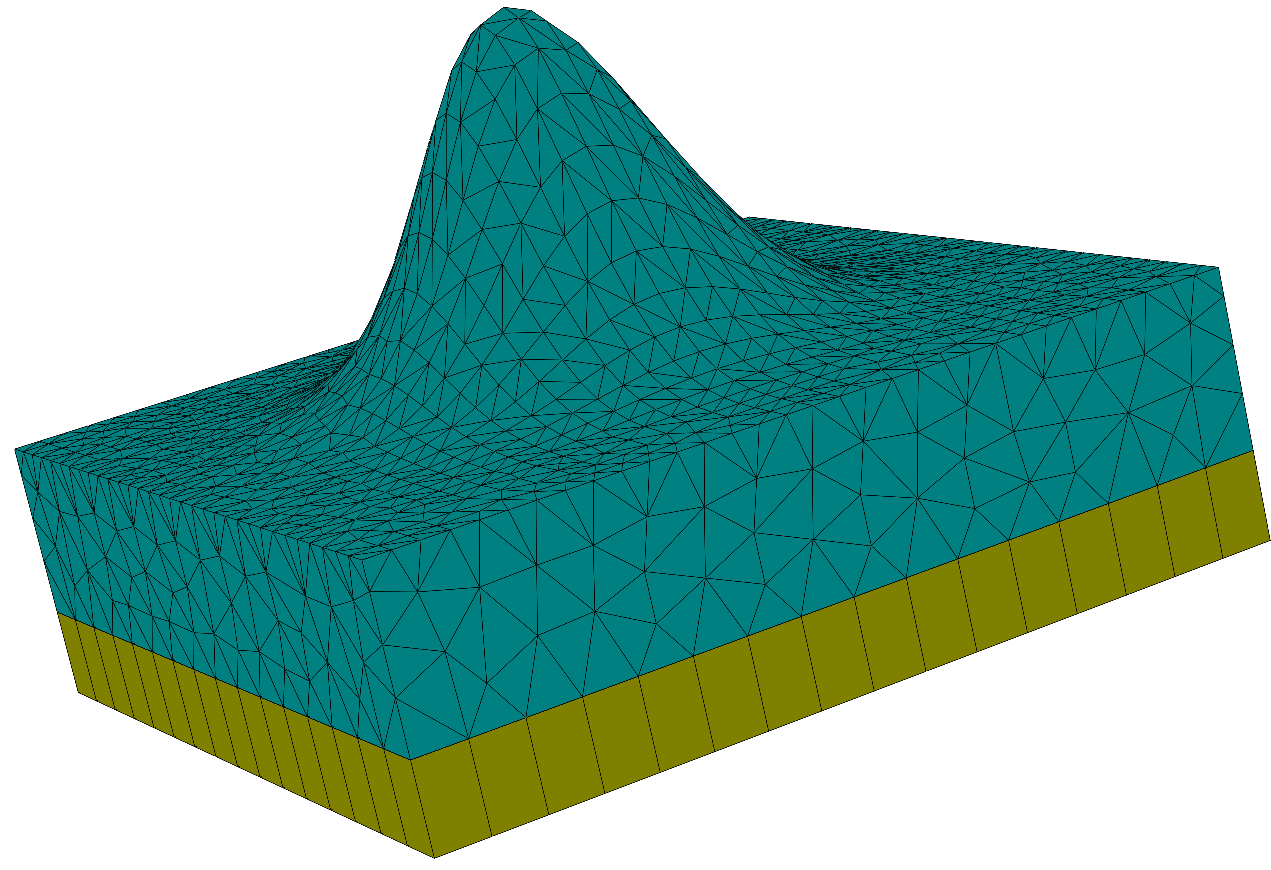Gaussian Bump¶
Learning targets
- Define a surface texture between two homogeneous layers
- Define a Gaussian bump like surface by a inline Python expression
This example constructs a Gaussian bump between two homogeneous layers:
.jcm Input File
layout.jcm [ASCII]
1 2 3 4 5 6 7 8 9 10 11 12 13 14 15 16 17 18 19 20 21 22 23 24 25 26 27 28 29 30 31 32 33 34 35 36 37 38 39 40 41 42 43 44 45 46 47 48 49 50 51 52 53 54 55 56 57
Layout3D { Name = "Layout3DA" UnitOfLength = 1e-9 MeshOptions { MaximumSideLength = 10 } Extrusion { Objects { Parallelogram { Name = "CoDo" DomainId = 1 Height = 100 Width = 100 Boundary { Class=Transparent } } } MultiLayer { LayerInterface { BoundaryClass = Transparent } Layer { Thickness = 10 DomainId = 1 } Layer { Thickness = 20 DomainId = 2 } LayerInterface { Texture { Python { Expression = "value=40*exp(-3e-3*X[0]*X[0]-3e-3*X[1]*X[1])" } MeshOptions { MaximumSideLength = 5 LowerDomain { MaximumSideLength = 10 } UpperDomain { MaximumSideLength = 10 } } } } Layer { Thickness = 50 DomainId = 3 } LayerInterface { BoundaryClass = Transparent } }
Note
A texture can be placed within each LayerInterface section, i.e. also between two stacked layouts. This allows to define the meshing quality on both sides of the texture individually.
